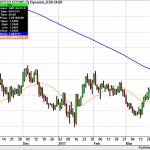Tootsie Roll Industries (TR) has a dividend growth track record that few companies can rival. The company has increased its cash dividend for 52 consecutive and has paid continuous quarterly dividends for even longer. That puts the company among the elite Dividend Kings, a small group of stocks that have increased their payouts for at least 50 consecutive years.
Dividend Kings are the best of the best when it comes to rewarding shareholders with cash and this article will discuss TR’s dividend and valuation outlook.
Business Overview
TR traces its roots back to 1896 when Leo Hirschfield began selling his candy from a family recipe in his shop in Brooklyn. He then went to work for The Stern & Saalberg Company, which later became The Sweets Company of America, and eventually morphed into the enterprise we know today.
The company’s history of innovation when it comes to candy products began with Hirschfield’s inventive mind creating various patents surrounding the way candies are made and indeed, the very texture of the company’s signature Tootsie Roll. That spirit of innovation was key to TR’s beginning and its growth, something that was helped along by two world wars.
This advertisement from World War 1 shows the company’s flagship product – while it was still known as The Sweets Company of America – in relation to soldiers on the march in Europe. TR saw tremendous growth and mainstream adoption of its candies during WW1 and WW2 as Tootsie Rolls were added to military rations, owed to their very tough texture that could go anywhere soldiers could.
While WW1 and WW2 were unspeakably horrible events in human history, they helped make TR into what it is today. To its credit, TR seized the opportunity to supply its treats to the US military and that relationship continues through today.
TR’s market cap is right at $2B and the company is expected to produce just over $500M in revenue this fiscal year. The vast majority of sales are made in the US but it does sell in Canada and Mexico as well. It sells its products through a network of 4,000 customers that include wholesalers, discount chains, dollar stores, supermarkets, the US military and others.
TR’s brands have grown over the years from the Tootsie Roll to various spin-offs of that candy as well as new lines.
TR branched out into bubble gum with its 2004 acquisition of Concord Confections; it also makes lollipops of various types and some chocolate products as well. Although TR has moved into some different candy products, it still has a very narrow focus and while that allows it to be very good at what it does, it also means growth opportunities are limited.
TR certainly has its niche built out in the world of candy but it is not without its risks. First, it is beholden to commodities prices. TR obviously buys a lot of sugar and corn syrup and as a result, swings in the prices of those commodities can significantly impact the company’s profitability. It hedges these commodities at times but it cannot escape the fact that it is subject to the whims of the markets in which these and other commodities trade. Indeed, this was a significant problem in 2017 compared to 2016 and impacted profitability.
In addition, there is also the matter of TR’s dual class structure and the fact that it is run essentially like a private company by the Gordon family. The family controls the vast majority of the voting rights of TR so the company is under complete control, just as it would be if it were private. Information is therefore tough to come by and there have also been repeated complaints in the past couple of decades about the Gordon’s funding an extravagant lifestyle with company money, in addition to disagreements from large shareholders in terms of strategic direction.













Leave A Comment